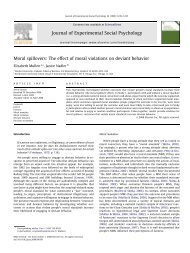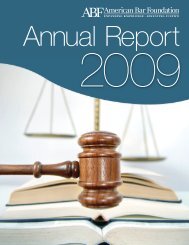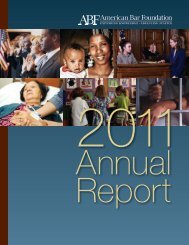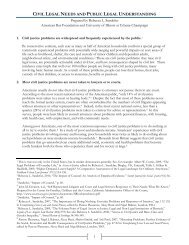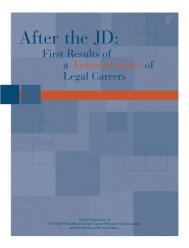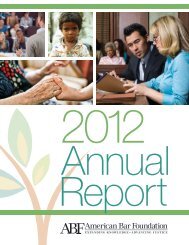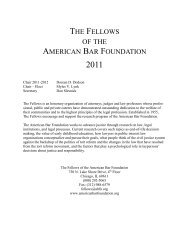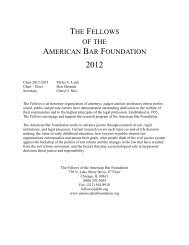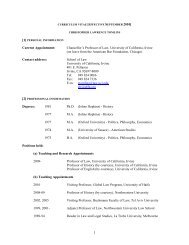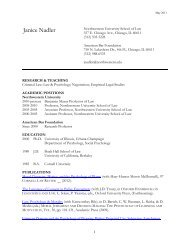Contesting Workplace Discrimination in Court - American Bar ...
Contesting Workplace Discrimination in Court - American Bar ...
Contesting Workplace Discrimination in Court - American Bar ...
You also want an ePaper? Increase the reach of your titles
YUMPU automatically turns print PDFs into web optimized ePapers that Google loves.
TRIALS AND APPEALSAs is clear from previous sections and figures, EDL cases rarely go to trial. Nonetheless, because trials are often the most dramaticand publicized events <strong>in</strong> EDL law, and because trials have at least the potential to yield far-reach<strong>in</strong>g remedies for discrim<strong>in</strong>ationvictims, we explored how pla<strong>in</strong>tiffs fared when a case did reach a judge or jury. The answer is straightforward: not particularly well.As depicted <strong>in</strong> Figure 5.12, employers are significantly more likely than the pla<strong>in</strong>tiff to w<strong>in</strong> at trial (58 vs. 24 percent). A smallpercentage of cases ended <strong>in</strong> mixed verdicts (four percent), whereas no verdict was rendered <strong>in</strong> 14 percent of trials. These casesmay not have been complete at the time of cod<strong>in</strong>g.Judges decide about 25 percent of EDL cases, juries 68 percent, and magistrates 7 percent (not shown <strong>in</strong> figures), but do differentdecision makers affect outcomes? Figure 5.13 demonstrates that decision makers do affect outcomes. In cases decided by judges,defendants are nearly twice as likely to prevail. Conversely, juries f<strong>in</strong>d for the pla<strong>in</strong>tiff over 30 percent of the time whereas judgesdecide <strong>in</strong> favor of pla<strong>in</strong>tiffs less than 7 percent of the time.F<strong>in</strong>ally, some cases are appealed. While the numbers are very small, only 242 cases <strong>in</strong> our sample, trial court outcomes are revered<strong>in</strong> only 12 percent of cases. Appellate judges are most likely to uphold the trial court decision, as shown <strong>in</strong> figure 5.14.figure 5.12 :trial outcomes by percent(n=122)-41-



